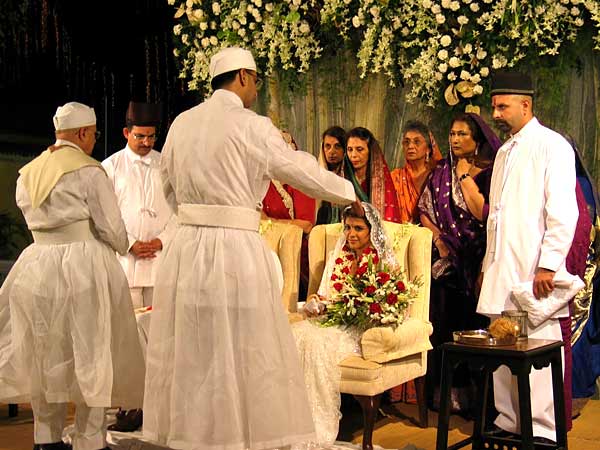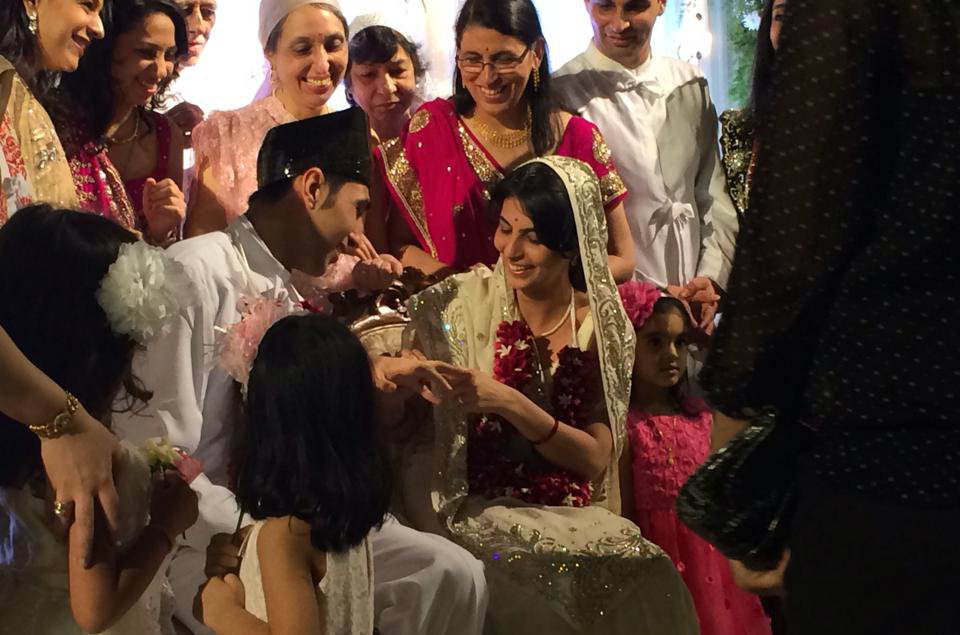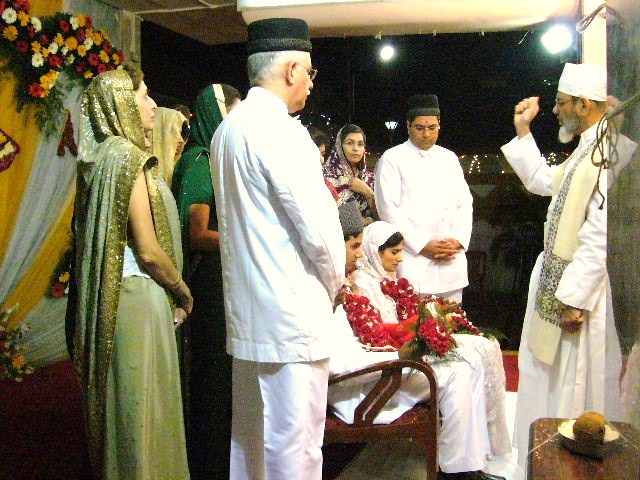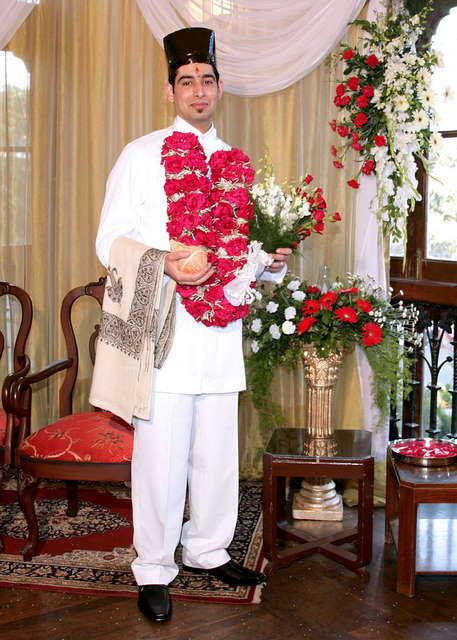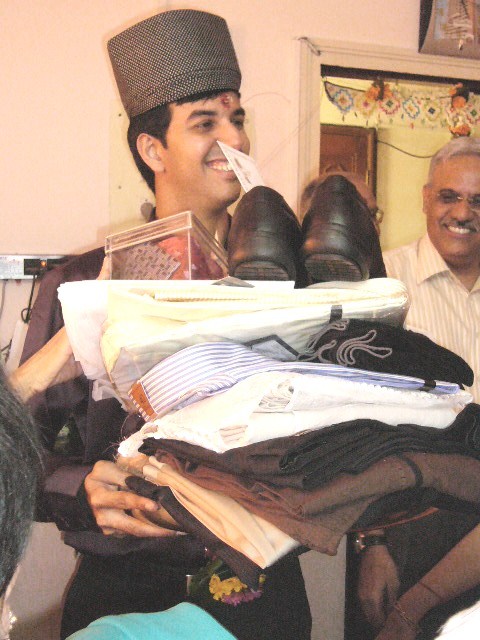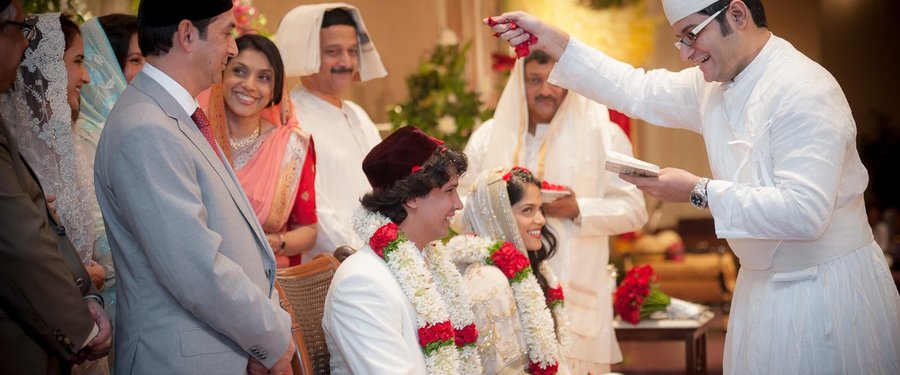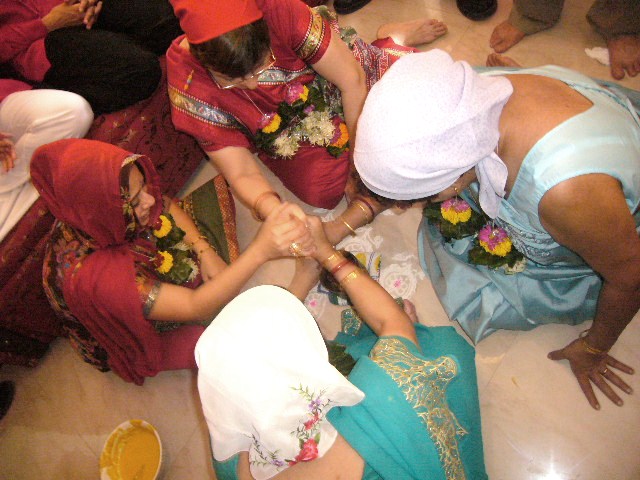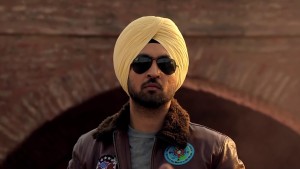Marriage in India is a sacred institution where the bride and the groom exchange vows and promise to stay together through thick and thin, not only in this birth but in the following births as well. In India, different religions observe different wedding rituals and Parsi Weddings commonly known as “Lagan” are entirely different. They are very elaborate where the customs and sacrament may be extended to over a week. Their ceremonial observance is divided into Pre-Wedding, Wedding day and Post-Wedding customs. These sacred rituals of an Indian Parsi Wedding are sure to leave you spell bound. Let us take a look how…
Pre-Wedding Sacrament
Rupia Peravanu (Time for Family Blessings) – Well, this custom is performed when both the families approve of the alliance. You may call it an unofficial engagement. At this event, approximately 5 to 7 (and the number cannot go more than 9) people from the groom’s side visit the bride’s family. Bride’s mother welcomes them at their doorsteps. Silver coins are gifted to the bride by the groom’s side along with few other things considered to be auspicious like coconut, sweets etc. Families sit together for refreshments after which the groom’s side leaves. Thereafter, the bride’s side adds more silver coins to the bag of coins received from the groom’s side and they then head towards the groom’s place with the same, where the ceremony is reciprocated.
Madhavsaro or Madarsrava (Ceremony of Planting Tree) – This ritual takes place exactly four days before the D-Day – that is the wedding day. Both the families plant a young mango tree, which is considered a symbol of fertility and abundance and is done so that the bride enters motherhood at the earliest after wedding. It is planted in a pot that consists of a soil which is a combination of betel nuts, dry dates, turmeric and three types of metal. Any other tree that bears abundant fruit is planted in non-tropical climates. This is done amidst the recital of prayers and mantras by the family priest. The pot is then placed at the entrance of the homes of both the families. Until the eighth day, the plant is regularly watered in the morning and after the wedding it is replanted at some other place. Those who take part in this ceremony are required to wear red coloured clothes.
Top 30 Simple Mehandi Designs This Season For Indian Bride
Adravanu or Sagan (Official Engagement) – Adra here means fire. The occasion is marked with lighting of earthen lamps or diyas. This is a formal engagement where the groom’s side presents the bride with new clothes, jewellery and other accessories; red coloured bangles are a must here. This ceremony usually takes place at the bride’s side. The bride usually wears a red coloured saree for the occasion.
Adarni (Bridal Shower) – This ceremony is somewhat similar to Adravanu. The groom’s family visits the bride and presents her additional gifts, jewellery, clothes, accessories etc. The same is replicated by the bride’s side. The ceremony is attended by close relatives, families and friends. This is followed by sumptuous treat where dahi and sev (Yogurt and vermicelli), boiled eggs and bananas are a must in the menu.
Supra Ni Reet or Supra Nu Murat (Haldi Ceremony) – This ceremony is similar to the Hindu haldi ceremony. In this, five married females apply haldi (turmeric) paste to the bride-to-be and the groom-to-be. According to the tradition, four married women are given a piece of coconut, beetel nut, dates and leaves which are put in a supra. They then sing songs and exchange the supras among themselves. The fifth woman is made to sit in the centre with Khalbatto and dry haldi (turmeric). After exchanging the supras these married women get together and grind the haldi along with some milk to form a paste. This paste is then applied to the bride and the groom.
Nahan – This ritual takes place immediately prior to the time when the bride and the groom are about to get ready for the wedding. This ritual embarks purification of soul and body where the groom and bride are bathed amidst enchanting of mantras and recital of prayers and are made to drink taro and eat pomegranate leaves. The bride then wears the wedding saree that is gifted by her family and the groom sports additional Parsi dagli and black cap or pheta.
Wedding Day Sacrament
Parsi wedding takes place at the Fire Temple or either at a baug or at an agiary. The period after sunset or very early morning is considered to be the most auspicious time by the Zoroastrians for the wedding. Majority of Parsi Lagans take place at 6:40pm. The decoration of the baug or wedding venue, staircase and doorway is done with large colourful designs that include flowers and rangoli patters.
Acchu Michu (Setting of the Stage) – A stage is set at the baug or fire temple where the wedding has to take place. For performing Acchu Michu, the bride’s mother gets a tray filled with coconut, rice, water, beetel nut, kharek and dates and circles it around the groom for seven times except the water which is thrown on the other side before the groom sets his feet on the stage. The same is followed by the groom’s side for the bride.
Ara Antar – A cloth in the middle separates the groom and bride so that they cannot see each other while they sit facing each other in order to perform this ritual. Rice is then given to both of them. The family priest then circles the couple seven times with a long tread and the moment the seventh circle is completed the couple is supposed to shower rice on each other. The one who throws the rice first is considered to loom over the relationship. Interesting, Isn’t it?
Chero Bandhvanu – Now the couple is made to sit side by side with the seven strands of thread tying them. The witnesses and the priest are made to sit beside them. Earthen lamps are placed on the tables and the priest enchants mantras and prayers for approximately an hour. The couple then exchanges rings and the priest showers his blessings on the bairi and var. Fire from the agiary is brought so that the newlywed can pay their homage amidst the shower of flowers.
Haath Borvanu – This is an exciting and fun ritual of the Parsi wedding. The sisters of the bride ask the groom to put his hand in a glass of water and he is made to sit that way until he gives away money to the bride’s sisters.
Pag Dhovanu – In this ceremony the groom is threatened by his sister-in-law with a glass of milk which she plans to spill on his shoes if he doesn’t pay her the money.
Chero Chorvanu – In this ceremony, the strands of thread that were biding the couple are finally removed by the sister of the bride. This is again followed by Shagun of Money and then the couple heads towards the fire temple to seek blessings.
Top 10 Luxury Wedding Destinations In India
Post-Wedding Sacrament
Reception – No Parsi Lagan is said to be complete without a reception. Parsi weddings are known for their scrumptious and lavish meals. The dining tables are well laid and decked up with mouth watering food and drinks flowing from all corners. Besides the grandeur, the music also makes it a mesmerising experience. The menu consists of a four course meal that includes both vegetarian and non-vegetarian cuisines. With this, the bride’s family escorts the groom’s family to their home, where the groom’s mother performs Acchu Michu before welcoming the newlywed couple inside the home.
And now that we all know about a Parsi Wedding, I am sure we are looking forward to receive an invitation for one such wedding. Don’t forget to hog on Prawn Patio, Gajar Mevanu, Chicken Farcha and Lagan Nu Custard when you get to attend one!

